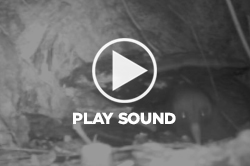2000 Motuihe Trust
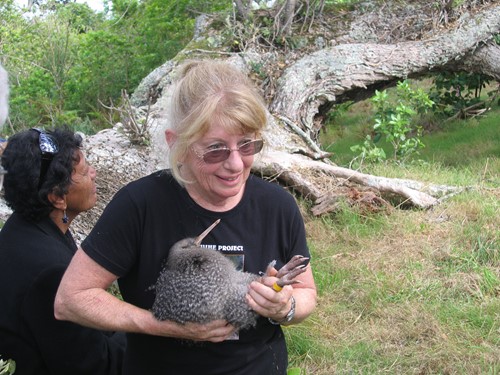
Ronnie Harrison at the release of little spotted kiwis in 2009
Formation of the Motuihe Restoration Trust
The start of the restoration of Motuihe Island
Ronnie Harrison and her partner Terry Gibbons were the concessionaires on Motuihe from 1984. From the first time she landed on Motuihe, Ronnie felt a strong spiritual connection with the island. She believed it was ”something about the size and shape of the bays, and the feeling you get when walking around. Because it is so small it makes people want to care for it. If we care for the land it will care for us.” The cultural and historical connections were also important to her and her vision for the future included farming on the island to provide visitors with a rural experience, building better visitor facilities and also a major replanting effort, using volunteer labour. Her vision and determination over the 22 years she lived on the island led to the formation of the Motuihe Restoration Trust in 2000.
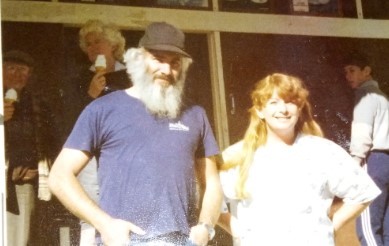
Terry Gibbons and Ronnie Harrison outside the kiosk (probably late 1980s)
One of Ronnie’s first actions was to gain a licence, along with her partner Terry Gibbons, to operate the kiosk on Motuihe.
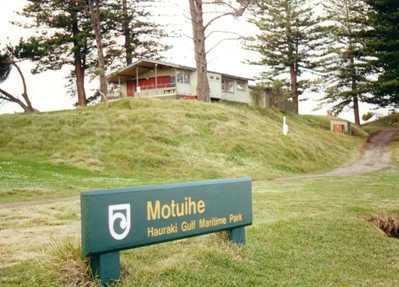
The Motuihe kiosk not long before it burned down in 2002.
Also on the island at that time were John and Faye Allen who ran the farm and lived in what is now called the volunteer house. The Ranger at the time was Frank van Derson with his wife Carol. Bruce Nelson, the pest control officer, lived in the single man’s quarters up in the farm complex area. Frank left in 1987 and the Allens left in 1990 leaving Ronnie and Terry to run the island on their own, except for a university student working over the summer. In 2009 the Department of Conservation (DOC) appointed John Mills as a permanent Ranger after the kiwi release. (Link to translocations document)
By 1993 Ronnie was well into her plans to improve the planting on the island, growing native plants in planter bags and root trainers, firstly around the volunteer house and later around the Ranger’s house. Phillip MacDonald, Chief Ranger on neighbouring Motutapu Island and John and Sandra Wotherspoon who ran the nursery on Motutapu helped regularly with things they could spare; seeds, trays, used planter bags and old root trainers. Phillip would put planting spades and other necessities on the ferry at Islington Bay for Ronnie to give to volunteer groups to use over the weekend and she would return them on the Sunday night ferry. She asked members of the groups that she catered for to plant a few trees while they were on the island. DOC allowed her to plant outside the fences along the cliff tops north and south of the Ranger’s house and also near the Norfolk pines and the cliff side of the roadway up to the farm house.
Forming the Trust
As required by DOC, Ronnie and Terry formed a limited liability company with Chris and Matt Zambucka. They then successfully applied for the farming concession and took over in 1998. Motuihe Island Ltd grazed cattle followed by sheep as their farming regime. Towards the end of the 1990s Ronnie discussed with DOC the possibility of restoring the forest on the island. DOC were sceptical as they felt it was too far gone with pests and weeds. They suggested to Ronnie that the only way forward was to form a charitable trust and to apply for grants.
Ronnie approached Michael Wood, the solicitor acting for Terry and Ronnie in negotiations with DOC. Michael, with a background in environmental restoration work in England, had originally met Ronnie during visits his company had made to the island. He agreed to help with the legal documents and is still working for the Trust today.
Helen Lindsay, who had had experience forming the Motuora Trust, also helped Ronnie with setting up the Trust. She later chose the formation of the Motuihe Restoration Trust as the subject of her diploma.The original trustees were Chair, Peter Whitmore (business man), Ronnie Harrison, Terry Gibbons, Hariata Gordon (Ngati Paoa), Mike Lee (Auckland Councillor with an interest in the Hauraki Gulf), Steven Jackson (NZ School of Outdoor Education), and Anne Fenn (Auckland Conservation Board). Michael Wood agreed to be Secretary but was not a Trustee until 2001. Tony Slark, the last naval surgeon, and his wife Eileen, were regular volunteers with the Devonport Yacht Club on their planting trips to Motuihe and Tony agreed to become the patron of the Trust.
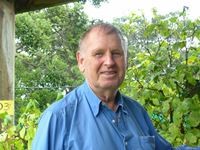
Peter Whitmore first chairman of the Motuihe Trust.
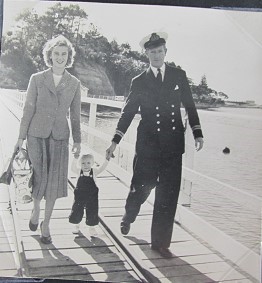
Tony Slark, first and only patron of the Trust and his wife Eileen with their eldest son.
The first meeting of the Trust was held on the veranda of the kiosk on Friday 30 June 2000 and the official registration was approved on 1st Sept. 2000. (Link to Trust documents p4 to 18) It had four aims: Land Management, Biodiversity, Public Facilities and Education. (Link to vision and goals document) There were many meetings with DOC over the next two years particularly with Warrick Murray. Another other trust that was formed about the same time, called “Terra Nature” was led by Graeme Woodhouse, an expatriate Kiwi who had lived in America for some years. He originally approached DOC requesting the opportunity to undertake the concession on Motutapu Island, but was advised instead to consider Motuihe. He had visited Motuihe and seen what a mess it was in and decided it would be a good project to be involved with. He had some well-known people connected to his project including politicians, a former Auckland Conservator, an ex-mayor of Auckland and bankers. (Link to second trust document)
Ronnie’s group and DOC wanted to combine the two group’s resources, but Terra Nature would not agree. In the end DOC had to decide which trust would be better for restoring the island and after much discussion decided on Ronnie’s Motuihe Island Restoration Trust because the people involved were local and had a genuine intention to restore the island.
Disastrous fire
In 2002, a fire completely destroyed the kiosk and catering area that Ronnie and Terry had operated from, leaving only the large stainless steel bowls used for salads recognisable. These are still being used by volunteers in the Trust nursery today. Terry had to work in Auckland leaving Ronnie and her son Michael to run the farm.
In May 2002 the name of the Trust was changed from Motuihe Restoration Trust to Motuihe Trust to avoid confusion with Motutapu when abbreviated to initials. (Link to name change document) Also the maximum number of Trustees was extended from 8 to 12 and it was decided that Advisory Trustees could be appointed as and when the Trustees felt fit. Specifically mentioned were Iwi who have an interest in Motuihe and scientific advisors. The Trustees at this time were Peter Whitmore (chair), Ronnie Harrison, Terry Gibbons, Anne Fenn, Mike Lee, Peter Lee (involved with TiriTiri Matangi supporters), Tony Lindsay (expert in database management, direct marketing and fund raising), Michael Wood, and Stephen Jackson.
Dealing with rabbits and other pests
The biggest problem standing in the way of any restoration attempts was the rabbits as they always won. Volunteers felt very discouraged when they found that the rabbits had eaten all the plants they had worked so hard to plant. Those areas where Ronnie was allowed to plant along the clifftops had eroded so much that visitors thought the land was shrinking. It was rabbits that were causing the cliff edges to fall away so alarmingly. Ronnie felt it was very dangerous for untrained people to be so near the cliffs, and applied to plant in other areas but was refused.
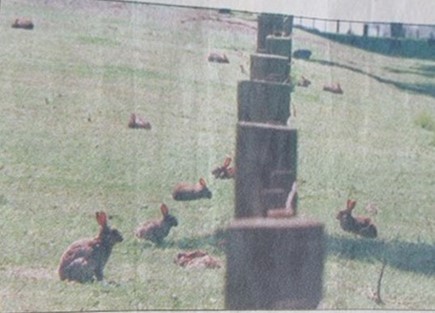
Photo: Auckland Star newspaper showing the rabbit problem on Motuihe.
The island was then surveyed using the MacLean’s scale that measures rabbit infestations. On a scale of 1 to 10 the east end of the island was a very high 8 and the headland was a 3. There were rabbits on every part of the island but fortunately there had never been that other scourge, opossums, on Motuihe. Fullers sponsored an attempt to control the rabbits with Tree Pel which, when spread around the plants, was meant to repel the rabbits. This failed however as the rabbits were so hungry that they ate the bark and the Tree Pel. Ronnie made many submissions to the Auckland Conservation Board, Auckland Council, Auckland Regional Council and DOC for help to control the rabbits, regenerate the forest and improve the roads. She also made submissions to Conservation Ministers, Sandra Lee and Chris Carter. However nothing was done.
It became obvious that an official rabbit eradication programme needed to be carried out before any reforestation could take place. Ronnie had been working on an 80 page Environmental Impact report following a template that Beau Fraser (DOC Area Manager, North Head) and Simon Mowbray (DOC Pest Control Manager) had supplied to her. She had completed the consultations required and lodged her application with the Auckland Regional Council. The resource consent was granted. The Department advised Ronnie that they had managed to raise the necessary funds so they would complete the physical action themselves.
In 2003 the pest eradication programme was actioned by DOC using Ronnie's resource consent, but changing the method. In 1993 and 1995 programmes had been carried out that removed the rats and mice from Motuihe. However, the rabbits and cats remained. The Auckland conservator at the time, Rob McCullum, felt ashamed that DOC had an island in such a degraded state and he spoke to the Minister directly saying that the eradication programme must happen. It cost DOC hundreds of thousands of dollars but they found the money. Magtoxin and 1080 carrots were used. The island was closed for 3 months. There were a few rabbits left and Don Thompson, a trapper, was employed with his specially trained dog and he eventually shot the last rabbit. It was Don’s determination to get that last rabbit that made the eradication programme successful. Thirty-two cats were also shot and the whole eradication programme took 18 months. The restoration project would not have worked if the rabbits had still been there. Pest free status was finally achieved in 2004.
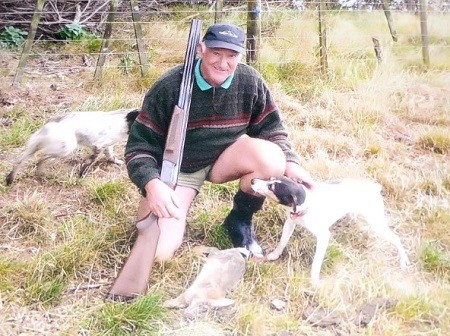
Trapper Don Thompson
Gathering supporters
In 2002 Ronnie sent out a notice to all the boating clubs in Auckland asking if they would like to become involved in the restoration programme. (Link to notice) The Outboard Boating Club replied. John Laurence, Secretary/Treasurer of the OBC, invited Ronnie and Peter Whitmore, plus some others, to make a presentation to the members of the OBC on 26 March 2002. Although some other clubs also replied, the OBC was the only club that was keen to get stuck in and do the work immediately.
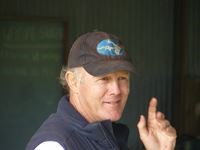
John Laurence Chairman Motuihe Trust from 2002 up to the current day (2021)
John Laurence started attending Trust meetings in May 2002 and was elected as a Trustee at the AGM on 23 August 2002. He was elected the new Chairman of the Motuihe Trust at a Special General Meeting on 20 September 2002 and Peter Whitmore became the Deputy Chairman. John was successful in applying for grants. Money from Sky City and the World Wildlife Fund was used to build the nursery. The labour was provided by OBC members. Mobil Oil and OBC funded the tractor. John was able to bring his nurseryman skills to Motuihe and he soon had the nursery running efficiently with thousands of plants produced each year.
Professor John Craig of Auckland University was a strong supporter of the restoration of Motuihe Island. He encouraged students to use it in their environmental studies. His student Anne Stubbs lived on the island in the late 1990s while completing her Master’s Degree. Her thesis was on the effect of rats and mice on the Motuihe environment. In 2003, Shelley Heiss-Dunlop, a Master of Science student also used Motuihe in her thesis. She did core samples and identified pollen in the soil samples. (Link to her work) This information gave sound data about what had been growing on the island pre mankind and in what proportions. This information became the basis for the restoration plan.
John Hawley, a landscape architect, produced a restoration plan in 2005 with an overall vision for the island. This plan is still being followed today (2017).
Ronnie wanted to keep the stock on the island for a while, however this was not possible as the animals broke through fences, pugged the ground and made planting very difficult. In 2005 therefore, the last of the cattle were removed. Ronnie and Terry left the island in 2007 following a settlement between them and DOC when DOC did not renew their licence. Michael stayed on helping DOC and the Trust until 2010.
In 1984 there was a daily ferry service to the inner Gulf islands plus Blue Boat ferries on a Wednesday and Friday. In later years the service was still good, operated by Fullers Gulf Ferries. It was still relatively easy to get volunteers out to the island. By 2004 the restoration programme was fully under way and in some years over 50,000 trees was planted. However, access for volunteers has become more and more of a problem with only one ferry a fortnight in recent years.
This record has been written in 2017 and Ronnie’s vision is becoming a reality. The forest on Motuihe is rising and in most places it is over head height. Endangered birds have been introduced, including kiwi. Tuatara have also been released. Every year hundreds of volunteers make the trip to Motuihe and plant, weed or propagate plants in the nursery. The success of the restoration of Motuihe will be a wonderful legacy to Ronnie and the many hundreds of people who have supported her.
The recovery of the land of Te Motu a Ihenga is a testament to the energy and belief of ordinary people, that by working together, they can achieve a common goal. Vision and determination do not alone achieve success; it’s the help, support and co-operation of all. From the child who walks along the beaches picking up rubbish that has floated up, to the abseilers weeding, volunteers planting, corporates funding, and most of all the time, energy and belief of those who want to make a difference to existing degradation. Ronnie Harrison
Links to interviews with people who made significant contributions in the early days of the Motuihe Trust.
Ronnie Harrison (link)
John Laurence (link)
Michael Wood (link)
Peter Whitmore (link)
Lois Badham (link)
Julie Thomson (link)
